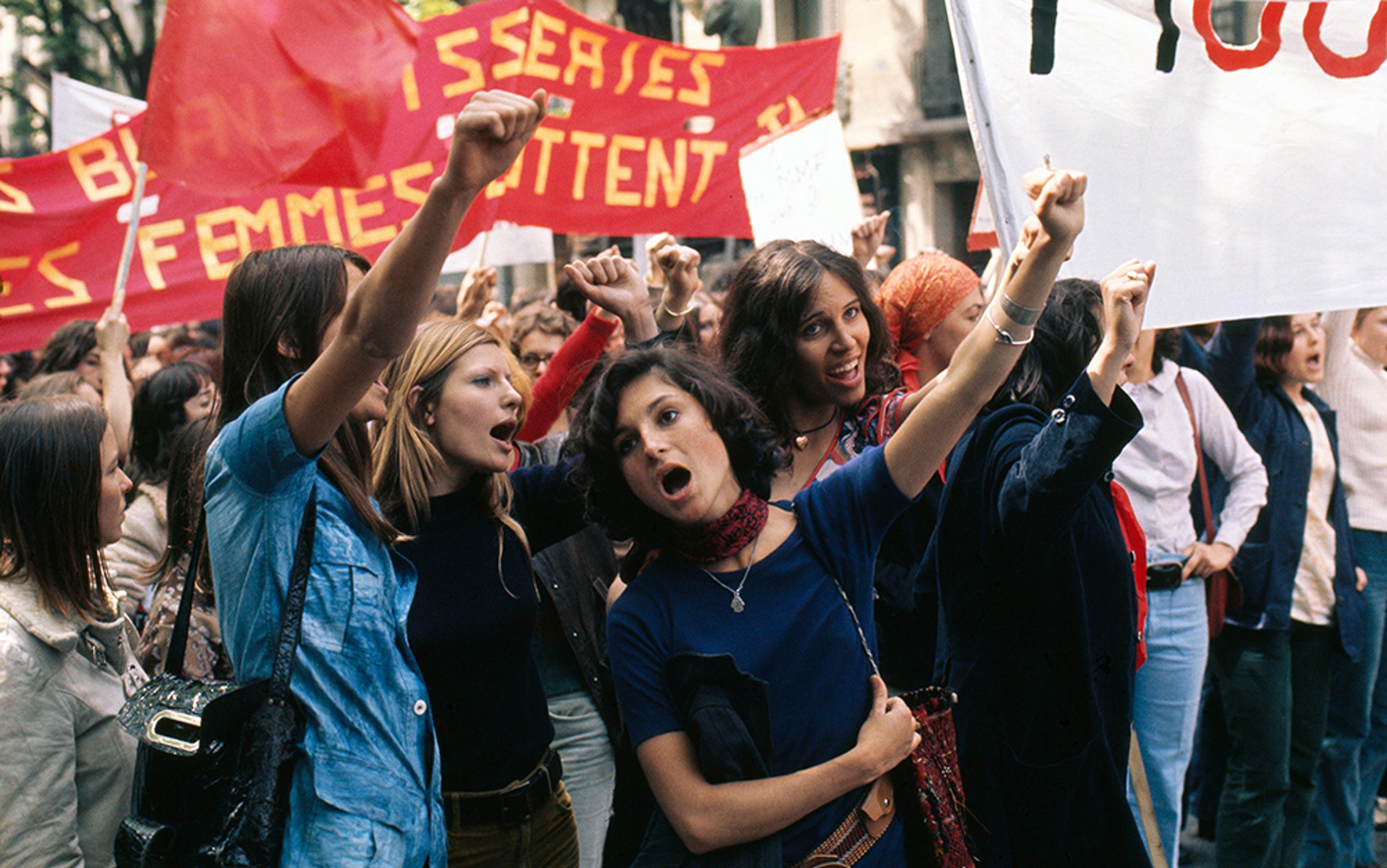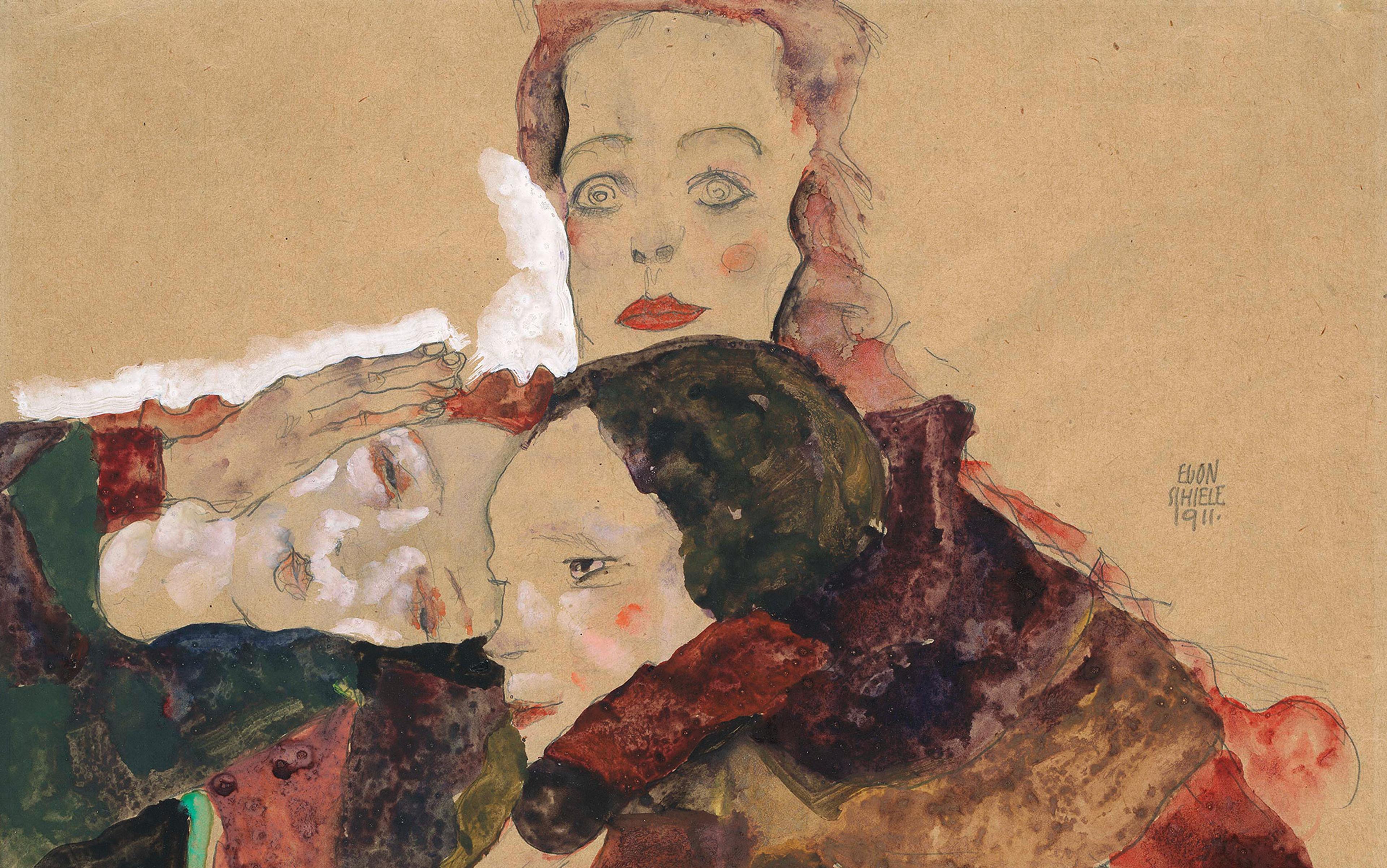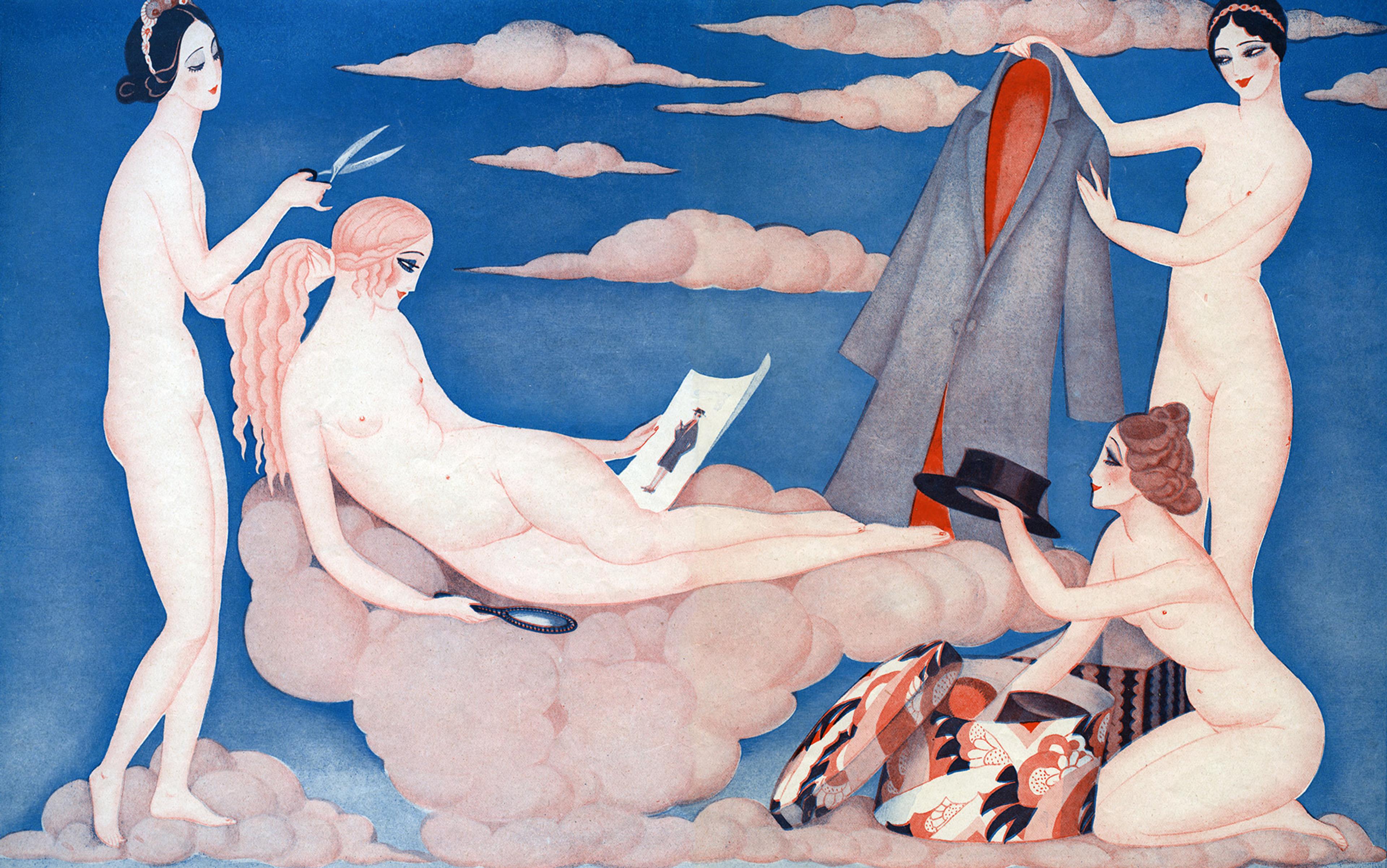In the spring of 1971, a group of 12 women moved into a brick house near Lincoln Park in Washington, DC and named themselves The Furies Collective. They were all white lesbians, under 30, most of them veterans of anti-war, Civil Rights, or community-organising movements, and they were beginning an experiment that promised an entirely new way for women to be in the world.
‘A woman in those days went from her family home to her sorority house – maybe – in college, and then marriage,’ Rita Mae Brown, a former Fury better known as the author of Rubyfruit Jungle (1973), said in a video made years later for the women’s leadership platform, MAKERS. ‘Very few women had the experience of living alone or living with other women outside of a college setting and learning about the world. So the idea that we could have our own space was really pretty amazing.’
Over two years, The Furies put out 11 issues of their radical feminist newspaper, ran a car repair school to help women become more independent, pooled their money, shared their clothes and cared for three children. The collective was much more than a safe haven or self-help project. In a society where prejudice against lesbians was near-universal, they believed they could lead the way to a world that was not just nonsexist but transformed beyond recognition.
‘Revolutionary lesbians are not only fighting against the institutions of male heterosexual power and privilege but are attacking the very foundations of the male world view – a view which is based on competition, aggression, and acquisitiveness,’ they wrote in a founding statement. ‘Lesbians choose to reject that world view and to live apart from men who have perpetuated those values for thousands of years. We have broken our last dependence on male privilege which kept us from being revolutionary.’
That same year – 1971 – Jo Freeman, a participant in and historian of women’s liberation, published a pamphlet, later appearing as a paper in a special issue of Recent Sociology dedicated to ‘Family, Marriage and the Struggle of the Sexes’. Freeman argued that the key to the movement’s success was its potential to combine two ways of addressing society’s gender problems: the Egalitarian Ethic and the Liberation Ethic. The first demands an end to sex discrimination and fixed gender roles, but the second seeks a deeper change. ‘To seek only equality, given the current male bias of the social values, is to assume that women want to be like men or that men are worth emulating,’ she wrote. ‘It is to demand that women be allowed to participate in society as we know it… without questioning the extent to which that society is worth participating in.’
Nearly a half century later, looking back at the story of The Furies, it’s easy to see how far we’ve come towards the Egalitarian Ethic. To most Americans today, the notion of lesbians as social outcasts, or a taboo against women living independently, is something out of a long-vanished nightmare; according to a Pew Research Center survey conducted in 2013, only 18 per cent of Americans think women should return to their ‘traditional roles in society’. And yet other kinds of gender inequality remain a stubborn part of US life. Women are seriously under-represented in positions of power and over-represented among the poor. Full-time female workers make, by some estimates, just 79 per cent of what their male counterparts do. Husbands still do a lot less housework than wives, and fathers are much, much less likely than mothers to be single parents.
The way we typically talk about such equity shortfalls these days is informed by the Egalitarian Ethic: would better child care and more flexible schedules help women succeed on the job? Should we teach girls to code, create special training programmes for women in sales, and encourage female managers to negotiate for higher pay? Is the persistence of distinct gender roles a matter of discrimination or personal choice?
Meanwhile, the Liberation Ethic has faded from view. The Furies’ concept of a ‘male world view’, and their notion of dismantling competition and acquisitiveness, would sound, to many modern ears, like antiquated gibberish. And yet the Liberation Ethic might be the best place to start, not only for addressing the special burdens modern women continue to bear, but also for making life better, along a whole lot of dimensions, for both men and women.
To see where the Liberation Ethic came from, start in the late 1960s and early ’70s. Within the anti-war and Civil Rights movements, women learned to organise around injustice. Close contact with male movement leaders had also shown them how much sexism there was to organise against, even within the left. Then too, there were white female radicals eager to take up the challenge of Black Liberation activists, who were calling on whites to focus on oppression within their own communities rather than presume to organise black communities. These New Left feminists joined, and clashed with, the more mainstream movement for the advancement of professional women that Betty Friedan’s The Feminine Mystique (1963) had sparked a few years earlier.
The results hit the United States like a lightning storm. Across the country, women joined consciousness-raising groups and suddenly found that their personal problems of insecurity, stalled careers, or sexual dissatisfaction fitted into an identifiable system of oppression. Women opened their homes to victims of domestic violence. In Chicago, housewives and students built a network to provide illegal abortions. Local groups organised without leaders, pointedly rejecting hierarchical, ‘masculine’ models.
It’s worth noting that the scare quotes are here for a reason. For the most part, Women’s Liberation activists didn’t believe in the naturally distinct masculine or feminine ways of thinking that underscored essentialism. The point was that men were socialised to try to dominate others, while women’s oppressed status made them more critical of all sorts of power structures.
The ideas on display in manifestos and newsletters of the era are wild, sometimes ridiculous or disturbing, yet always charged with a sense that they were part of a world-changing moment. Some in the new women’s movement looked to the revolutionary women of Cuba and China for inspiration and hoped that American women would help lead an armed socialist revolution for a society free from race, class, and gender hierarchies. Some, like The Furies, formed communes or collectives and imagined a world in which women would split from men and run their own peaceful societies. Others, as reported with almost anthropological interest by Life magazine, hoped that gender differences and nuclear families would disappear altogether and that men and women would raise children in unison in communal households. Always pushing the envelope, Shulamith Firestone called for machines that would carry and give birth to children, eliminating even the natural power differences between biological males and females: ‘If there were a word more all-embracing than revolution we would use it,’ she wrote.
In Atlantic City, women protested against the objectification and commercialism of beauty pageants and crowned a sheep Miss America. In Cambridge, Massachusetts, they seized a building owned by Harvard University and occupied it for 10 days. Many in the movement sought an escape from traditional nuclear family dynamics of independence and dependence, domination and submission. In its place, some embraced unrepentant promiscuity or equally unrepentant celibacy. Others followed The Furies and formed communes or collectives, imagining a world in which women would split from men and run their own peaceful societies. Gay Liberation, tied closely to Women’s Liberation, expanded the meaning of family, applying it to entire gay neighbourhoods carved out of a hostile country.
Even less utopian-minded feminists sought a much-changed world. In 1970 Gloria Steinem wrote that while women were no more moral than men, they were ‘uncorrupted by power so far’, and would use political power to transform ‘the idea of manhood into something less aggressive and better suited to this crowded, post-atomic planet’. Men’s liberation groups emerged, arguing that fighting patriarchy would help them escape the constraints of being breadwinners and gain richer emotional lives.
By 1975, the sociologist Judith Buber Agassi was confidently predicting that the new enlightened practices of young women and men would transform the workplace. Hours would be more flexible and shorter, particularly for the mothers and fathers of infants. Men would stop measuring their value based on status and prestige at work.
Modern society is a thicket of economic and social dependencies: the notion of real independence – short of heading into the hills to eat roots and berries – is absurd
The radicalism of the Liberation Ethic – particularly the idea that a traditional male relationship with work was nothing to envy – found its way into concrete policy goals in the Welfare Rights movement of the 1960s and ’70s. In the ’60s, poor single mothers – many with experience in the labor movement, Civil Rights, or tenant-organising – formed local groups. Their demands were relatively modest – clothing allowances, babysitters for people in welfare-to-work programmes, an end to ‘midnight raids’ to check for a man in the house – but the fact that welfare recipients were making demands at all was groundbreaking. In 1967, these groups came together, with the help of middle-class organisers, to form the National Welfare Rights Organization (NWRO). Instead of grudging payments given only to women who complied with caseworkers’ demands, the NWRO activists wanted unconditional income that validated their work as mothers.
In a 1972 article for Ms. magazine, Johnnie Tillmon, a welfare recipient and NWRO leader, explicitly linked the organisation’s work to the fight against male domination. She described the existing welfare system as ‘like a super-sexist marriage. You trade in a man for the man. But you can’t divorce him if he treats you bad. He can divorce you, of course, cut you off anytime he wants. But in that case, he keeps the kids, not you. The man runs everything.’
By arguing that getting a welfare cheque should not be stigmatised, the NWRO was challenging an idea most of us take for granted: that a man who works, gets paid, and has a wife or hired help to do his laundry and make his meals is independent, while a woman who cleans, raises kids, and has her rent paid by a husband or the government is dependent. Critical theorists and historians such as Nancy Fraser and Linda Gordon point out that this meaning of ‘independence’ as earning power only emerged in the industrial era. But to cling to it now is misguided. Modern society is a complicated thicket of economic and social dependencies: the notion of real independence – short of heading into the hills to eat roots and berries – is absurd.
Welfare Rights activists challenged the idea that their particular kind of dependence voided their right to make autonomous decisions. They argued that a guaranteed income would let women choose both whether to work outside the home and also what kinds of personal relationships and family structures to be part of.
While Tillmon was making her case in Ms., working- and middle-class socialist feminists, first in Italy and later in the US and elsewhere, were organising the parallel Wages for Housework campaign. The two groups’ goals were very similar. Like the guaranteed income proposed as a replacement for welfare, the ‘wages’ paid for housework were to come from the government. Wages for Housework thus echoed the Welfare Rights argument that caring for home and family is real work, and that earning a wage was no solution to women’s oppression.
‘Those who advocate that the liberation of the working-class woman lies in her getting a job outside the home are part of the problem, not the solution,’ one of the movement’s founders, the Italian feminist Mariarosa Dalla Costa, wrote in a 1971 pamphlet. ‘Slavery to an assembly line is not a liberation from slavery to a kitchen sink.’
In a way, Wages for Housework was even more radical than Welfare Rights. Instead of merely trying to put unwaged work at home on the same level as paid labour, these women wanted to reduce the importance of all work. Dalla Costa insisted that truly free women could reclaim their sexual and creative energies and rebuild the social connections that capitalism had eroded.
It didn’t take long for the Liberation Ethic to fall apart. Infighting and fragmentation within the most radical parts of Women’s Liberation played a role, as did the general rightward tilt of the nation as the 1980s approached. But, as bell hooks wrote in her 1984 classic Feminist Theory: From Margin to Center, it was also partly a question of privilege within the movement. White, college-educated women were much more likely than others to see equality with their brothers as a central goal. Those elite women were both over-represented in Women’s Liberation and more appealing to the media than the black, Latino, and working-class white feminists who helped develop some of the movement’s deeper social critiques. The goal of equality with men was also easier to explain and publicise than a comprehensive overhaul of society that took on sexism, racism and economic inequality all at once.
The Liberation Ethic did not disappear entirely. Many academics and activists have continued to frame the status of women within broad economic and racial structures. But you can’t go far reading popular feminist books and websites today without being bludgeoned by the insistence that Feminism Just Means Equality with Men – Which No One Should Find Threatening.
Of course, the Egalitarian Ethic has brought us a long way: reducing hiring discrimination, curbing sexual harassment, and improving women’s chances for promotions and decent wages. Women have begun to transform male-dominated industries, from law enforcement to entertainment. And the fight continues.
For many working-class women today, full equality with their male peers would still mean stagnant wages and unstable jobs with erratic hours
Most recently, the biggest conversation around workplace equality was sparked by Sheryl Sandberg’s call for women to ‘lean in’. Sandberg wants professional women to be more ambitious and for government and corporate policies to support them in their ambition, with flexible schedules and good childcare. Leaning In means embracing the economic and psychological ‘independence’ that upper-class men have enjoyed for centuries. The trouble is, for both men and women, this actually entails depending on someone else to do what Women’s Liberation called the shit work. Dual-income professional couples only hold things together (sometimes tenuously) thanks to cheap house-cleaning services, cheap childcare and fast restaurants.
Meanwhile, for many working-class women today, full equality with their male peers would still mean stagnant wages and unstable jobs with erratic hours. Besides, while most working-class men and women hold jobs and take pride in earning money, they don’t typically put their careers at the centre of their lives.
Even for the highly educated women to whom Sandberg’s book Lean In (2013) does speak – and even for their husbands – work is often precisely the opposite of liberating. A lot of the time, it’s a soul-deadening swamp of conference calls, confusing dictates from management, and furtive texting to kill time so you can be seen to leave after your boss. Even with a flexible schedule and great childcare, schlepping through years of this in hopes of a big bonus and promotion looks – as some 1970s feminists might put it – like a kind of psychosis created by a male view of the world. Meanwhile, now as ever, many of the jobs that are actually useful in the world – daycare worker, teacher, home health aide – are still disproportionately held by women, and disproportionately low paid and disrespected.
When women drop out of the corporate world, social conservatives often take it as a vindication of their belief in motherhood as the primary vocation for women. Some feminists respond that women aren’t really choosing to leave but are forced out – by discrimination and a lack of flexibility. Others say that feminism should just encourage women to make their own choices to work or stay home, without considering whether those choices have a larger social impact in reinforcing a patriarchal division of labour. Any notion that maybe it’s the men whose life choices need an adjustment seems to be incomprehensible.
Which brings us back to the Liberation Ethic. What would it look like to focus less on how women can catch up with men and more on how all women can have better lives? In her 2011 book The Problem with Work, the feminist scholar Kathi Weeks suggested two major reforms: implement a modern version of Wages for Housework in the form of a universal basic income for everyone, and shorten the standard work day to six hours without reducing pay. The argument lines up with a growing movement to update our economy for an era in which most industrial work can be done by robots, while the jobs human beings are best at – caring work and intellectual labour – are hard to monetise.
The crucial point is that these reforms would help men, too. Right now, most men do not feel particularly powerful or fulfilled in their jobs. Most fathers are stressed by the competing demands of work and family. And, just as with women, the worst effects fall on the poor. As Katheryn Edin and Timothy J Nelson reveal in Doing the Best I Can (2013), their ground-breaking study of the lives of poor fathers in parts of urban America, low-income men often find their greatest sense of purpose in their children, but are tormented by their inability to fill the role of provider, and by gendered norms that keep them from focusing their energies on caregiving.
Of course, feminists continue to lament that men still fail to do their share of housework. But if we’re talking about unpaid, disrespected work that women are fleeing in droves, why would they? If men could do paid work for 30 hours a week, take care of their share of housework and childcare, and spend the rest of the time hanging out with friends and working on their own creative projects – without falling into poverty or feeling like a stigmatised dependent – maybe they’d sign right up. And if they didn’t, well, that would be their loss.
As Weeks argues, a universal basic income coupled with shorter working hours would give us not just more freedom to choose the work we want, but also a chance to organise our lives in satisfying ways. ‘Beyond creating time for people to fulfill their duties to the family as it is presently conceived, a feminist time movement should also enable them to imagine and explore alternatives to the dominant ideals of family form, function, and division of labour,’ she writes.
From a modern egalitarian feminist perspective, new family forms or lifestyles might seem like an odd political goal. After all, we’ve already remodelled the ideal nuclear family to be more equal and opened it up to same-sex couples, while 1970s-style visions of children raised in communes and cooperative homes have long since faded away.
And yet, outside the realm of traditional politics, many people – especially young ones – are seeking entirely different ways of seeing relationships, gender, and sex. Growing numbers of people identify as neither male nor female, upending not just gender roles but gender itself. Polyamorous triads and quads and more exotic geometries are reconfiguring romance. BDSM (bondage, dominance, sado-masochism etc) players are dragging unspoken assumptions about sexual dominance and submission out into the light and then reworking them in novel ways. These movements are often framed as simply a matter of individual choice, but they owe their existence to a Liberation Ethic, and they have the potential to cut to the core of centuries-old assumptions about women and men.
A feminism based on the Liberation Ethic would question the very foundations of our work and family lives
Kate Bornstein, a prominent gender theorist and transgender activist, argues that challenging assumptions about gender is part of a broader campaign against all sorts of power structures. ‘The value of breaking the gender binary will be to use what we’ve learned to help break down the false binaries masking hierarchical vectors of oppression – namely age, race, class, religion, looks, ability, language, citizenship, family, and reproductive status and sexuality,’ Bornstein said in a 2011 interview with the magazine Herizons.
The truth is, the traditional heart of gendered identity, the standard-issue nuclear family, really doesn’t seem to be working for a lot of people – particularly those who don’t have the income to outsource the shit work. As The New York Times reported in 2012, there has been a huge decline in the percentage of working-class children with married parents over the past three decades. A lot of mothers have also escaped traditional dependence on husbands. But the available alternatives – like solo parenting, serial monogamy, or forming joint households with friends or siblings – are deeply stigmatised and don’t offer much financial stability.
A feminism based on the Liberation Ethic would question the very foundations of our work and family lives. It would attack the ‘masculine’ obsession with narrowly defined profit and productivity. It would demand generous social welfare programmes and part-time jobs with good pay, interesting work, and room for advancement. It would help people transform marriage to work for them – or create different kinds of relationships that suit them better. It would ditch the false dichotomy of dependence and independence and acknowledge that, in a complex human society, we are all necessarily interdependent. Above all, it would argue not that women should live more like men, but that everyone, regardless of gender, should live more like they want to.
Real equality won’t come from cajoling men or women into doing work we’d rather not do – at home or at the office. It will come from offering us all better lives.






